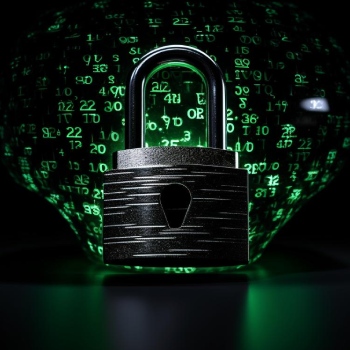At the heart of privacy legislation in the European Union (EU) and the European Economic Area (EEA) lies the General Data Protection Regulation (GDPR), a pivotal framework designed to safeguard individuals’ information rights. Embedded within EU privacy and human rights law, notably within Article 8 of the Charter of Fundamental Rights of the European Union, the GDPR aims to empower individuals by granting them greater control over their personal data. By replacing the Data Protection Directive 95/46/EC, the GDPR introduces streamlined terminology and establishes definitive guidelines for the cross-border transfer of personal data beyond EU and EEA boundaries.
Adopted by the European Parliament and Council of the European Union on 14 April 2016, the GDPR took effect on 25 May 2018. Unlike a directive, the GDPR operates as an EU regulation, directly enforceable across member states without the need for national transposition. While maintaining this uniformity, the GDPR allows for certain provisions to be adapted by individual member states to suit specific circumstances.
Embraced globally as a model for data protection legislation, the GDPR has influenced laws in various jurisdictions, including Turkey, Mauritius, Chile, Japan, Brazil, South Korea, South Africa, Argentina, and Kenya. Even after Brexit, the United Kingdom adopted its version, the “UK GDPR,” mirroring the EU regulation. Furthermore, the California Consumer Privacy Act (CCPA), implemented on 28 June 2018, bears striking resemblances to the GDPR, showcasing its profound impact on international privacy standards.
Unified Data Protection Regulations in the EU
The General Data Protection Regulation (GDPR) applies to organizations, whether within or outside the EU, that collect or process the personal data of individuals within the EU. It covers data controllers, processors, and subjects, ensuring comprehensive protection across borders. While exemptions exist for purely personal activities, the GDPR defines personal data and outlines the roles and responsibilities of the entities involved. Despite exemptions for national security and law enforcement, concerns arise regarding conflicts with third-country laws. Each EU member state appoints an independent supervisory authority to oversee compliance, fostering cooperation among authorities through mutual assistance. The GDPR establishes a single set of rules across member states, with a lead supervisory authority overseeing businesses with multiple establishments within the EU. The European Data Protection Board (EDPB) coordinates supervisory authorities, ensuring consistent enforcement and oversight.
Roles of Controllers and Processors

Data controllers are required to provide transparent disclosure regarding data collection, including the lawful basis and purpose for processing, retention duration, and any sharing with third parties or entities outside the European Economic Area (EEA). It is imperative for firms to safeguard the data of employees and consumers, ensuring minimal intrusion on data privacy while extracting necessary information. Internal controls across departments, such as audits and operations, must be established to enforce regulatory compliance. Data subjects hold the right to request a portable copy of their data and request its erasure under specific circumstances. Public authorities and businesses engaged in regular or systematic data processing must appoint a data protection officer (DPO) to oversee GDPR compliance. Data breaches impacting user privacy must be reported to national supervisory authorities within 72 hours. Violators of the GDPR risk substantial fines, up to €20 million or 4% of the annual worldwide turnover, whichever is greater.
Data administrators must incorporate data protection principles into their business processes by default and by design in order to demonstrate conformance. This encompasses measures such as the implementation of effective safeguards and the pseudonymization of personal data, even when data processing is performed by a data processor on behalf of the controller. The legal basis for processing, data retention periods, data transfers outside the EU, and the extent of data collection must be explicitly communicated to data subjects. Additionally, they must be informed of their privacy rights, which include the ability to revoke assent, access their data, request data erasure, access a portable copy, contest automated decisions, and submit complaints with a Data Protection Authority. Data protection impact assessments are required to evaluate the risks to the rights and freedoms of data subjects, with supervisory authorities requiring prior approval for high-risk activities.
Technical measures should be implemented to guarantee data minimization and conformance throughout the processing lifecycle, and privacy settings should be configured at a high level by default. To ensure the privacy and proprietorship of data, encryption and decryption operations should be performed locally. Outsourced data storage on remote clouds is considered secure only if the data proprietor maintains decryption keys to guarantee data privacy and security.
Ensuring Security of Personal Data
To safeguard personal data, controllers and processors must implement suitable technical and organizational measures aligned with data protection principles. This entails designing business processes with privacy considerations and incorporating safeguards such as pseudonymization or full anonymization where applicable. Information systems should prioritize privacy, utilizing the highest privacy settings by default to prevent public accessibility of datasets. Personal data processing is only permissible under specific lawful bases outlined in the regulation, including consent, contract, public task, vital interest, legitimate interest, or legal requirement. Data subjects retain the right to revoke consent at any time.
Article 33 of the GDPR mandates that data controllers promptly notify the supervisory authority of any breaches unless they are unlikely to result in risks to individuals’ rights and freedoms. Notification must occur within 72 hours of becoming aware of the breach. Individuals must be informed if there is a high risk of adverse impact. Additionally, data processors are obligated to notify the controller without delay upon discovering a personal data breach. However, notification to data subjects may not be necessary if appropriate technical and organizational protection measures, such as encryption, render the data unintelligible to unauthorized individuals.
Conclusion
The GDPR represents a significant shift in how personal data is managed and protected within the EU, setting a high standard for data privacy worldwide. It imposes stringent requirements on organizations, ensuring transparency, accountability, and the implementation of robust security measures. By clearly defining the roles of data controllers and processors and by granting data subjects substantial rights, the GDPR aims to protect individual privacy and promote trust in the digital economy. As organizations continue to navigate these regulations, the emphasis on compliance and data protection remains paramount, highlighting the global importance of safeguarding personal information in an increasingly interconnected world.Similarly, frameworks and legislations such as NIST (National Institute of Standards and Technology), CFAA (Computer Fraud and Abuse Act), and ECPA (Electronic Communications Privacy Act) play crucial roles in establishing standards and legal parameters for data security and privacy in the United States, further underscoring the universal need for robust data protection measures


